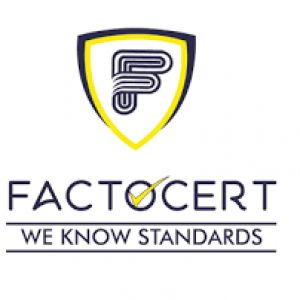HOW CE CERTIFICATION IN QATAR HELPS COMPANIES TO TRADE THEIR PRODUCTS IN DPosted by isocert on November 26th, 2020
CE Mark Certification in Qatar on each product will get you the Gateway pass the manufacturers to sell their product inside the European countries. CE marking certification is made mandatory in order to getting marketing clearance for the products to have their selling product in European countries. Marking fulfil Steel safety and mandatory requirements which are described by the derivatives of European Union. General specifications and safety measures must be implemented in all kind of products in order to have the market value. Must have the documentation and recorded details in order to get this certification on their products. The CE mark is a symbol that a manufacturer affixes CE Mark Certification in Qatar to a product so that it can be sold in Europe. The mark is mandatory for products which fall under one of 24 European directives. The CE mark means that the manufacturer takes responsibility for the compliance of a product with all applicable health, safety, performance and environmental requirements. CE stands for “Conformity Euro penne,” the French for European conformity. The mark is required in all 27 member states of the EU, as well as Iceland, Norway, and Liechtenstein. Switzerland accepts the CE mark for some products and Turkey actually requires that many products be CE marked. The manufacturer, whether established inside or outside the EU, is ultimately responsible for affixing the CE mark and is also responsible for its proper use. The manufacturer established outside the EU may appoint an authorized representative established in the EU to act on his behalf. CE marking is about more than affixing a symbol to a product. The first step is to see if your product is covered under one or more of the 24 CE directives below. If your product falls under any of these directives, it needs to be CE marked. A directive is a legislative act of the European Union which requires member states to adapt their national laws to achieve a particular result that is harmonized to EU rules in this area. Each directive details what the EU legally requires for your product to be compliant. These are formally referred to as “essential requirements” in the directive. These requirements are very general in nature. The directives do not detail how to design a product in a way that it meets the essential requirements. Conformity assessment to the European directives for CE marking may consist of different activities, including product testing, visual inspection, risk analysis as well as a review of product labels and instructions. Typical steps which may be involved in the assessment of conformity include: A review of the technical documentation related to the design, manufacture and/or operations of the product; Testing of one or more specific aspects of each product, or of a sample of the products, or of a representative specimen of the product; Assessment of the production quality systems of the manufacturer; and Ongoing verification of product unit conformity. All CE marking directives impose an obligation for the manufacturer to create and make available technical documentation (or a technical file) containing information that demonstrates the product conforms to the requirements of the directive. Technical documentation relevant to a CE-marked product must be kept for at least 10 years from the last date the product was manufactured, unless the directive provides for a later date. The technical documentation must be provided on demand to enforcement authorities, often within short timelines. The technical documentation needs to be kept up-to-date, especially when the product is modified or is subject to updated conformity assessment procedures. The CE mark must be: affixed to all new products, whether manufactured in the Member States or in third countries; to use and second-hand products imported from third countries; and to substantially modified products that are subject to directives as new products. Directives may exclude the application of the CE mark on certain products, even if the directive otherwise applies to the product. These specific exceptions vary from directive to directive. The CE mark shall, as a rule, be affixed to the product or to its data plate. However, it may instead be affixed to the packaging or to the accompanying documents if:
Considering the implementation of CE marking certification in any organisation we consider it as a passport to the European Union area where in the manufacturer must make sure the product is certified and have the affixation of CE mark on the product. We help the organisation to achieve this phenomenon easily with our expertise advice from our Consultants. Like it? Share it!More by this author |



